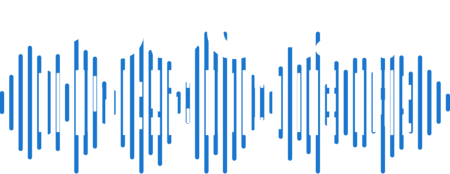 Ever find yourself at the end of a podcast recording session unsure of what you want your audience to do? Do you have a call to action for your audience?
Ever find yourself at the end of a podcast recording session unsure of what you want your audience to do? Do you have a call to action for your audience?
Call to Action
Call to Action is one of those phrases that someone coined — someone in marketing, according to Wikipedia — to indicate the act that should result after the listener hears the message.
That’s a lot of verbiage to say, “Do this thing right now.”
Why do we do this?
Ever watch an Oxiclean commercial from back in the day when Billy Mays was pitching it? Every form of persuasive technique known to humankind shows up. Repetition, emotional appeal, logical demonstrations, creating desire for approval by others. You name it, it’s in there.
(More than 20 years after the production of those commercials, I still remember them and, yes, I bought Oxiclean recently.)
What’s your call to action? Does your audience know what you want them to do?
If you have a podcast that’s marketing your business, it’s easy to know what you want the audience to do: buy your product or service. But if you’re a new podcaster, do you have a call to action?
Have a Call to Action
When you’re starting out, a call to action will build your audience. What do you want to ask them to do?
1. Tell a friend. Finding a podcast remains one of the biggest problems in our industry. With millions of dead podcasts cluttering up the indexes, it can be hard for your audience to find you. But, when someone does, they’re your new marketing team. Ask your audience to do one thing: share this podcast with someone.
I avoid telling people to share the podcast with someone who needs it — that’s a bit pushy and might be seen as an insult. Instead, ask your listeners to share it with someone they know will like it, or someone who wants to know more about your topic. This technique builds your audience by word of mouth, which we know is the most effective in marketing your show.
2. Smash that Subscribe Button. Watch any YouTube channel and too often you’ll hear “Smash that Subscribe Button” as a call to action at the beginning of the video. Too often, it’s before the listener has had a chance to decide if this content has value to them. It’s like meeting a new person and the first thing they ask is to borrow some money.
Yet asking people to subscribe to your podcast is without a doubt the most important call to action you can make when you’re first starting out. You want subscribers who will get notifications about your new episodes. In some podcast players, you can set it to download new episodes of subscribed podcasts automatically. Some of your listeners are going to do that. Subscriptions are the backbone of your downloads.
That’s why I think PowerPress is a great WordPress plugin for your podcast website. This plugin produces a comprehensive subscription page for many different platforms. Not just the big ones like Spotify, Apple, or Google, but also international platforms such as Jiosaavn or Gaana. When you use PowerPress, you can direct your audience to go to your subscription page and pick their provider.
A call to action to subscribe is ideal, but where you place it is also important. At the beginning of the podcast, you look needy. At the end of your episode, a significant number of listeners may have dropped off. I like midroll calls to subscribe, even if there may be another call to action at the end.
3. How many calls to action are too many? Don’t overwhelm your audience. You can ask me to subscribe, tell a friend, go to your website, like you on Facebook and follow you on Instagram … and already, I’m shutting down. You’ve given me too much to do. Instead, prioritize.
Prioritize what you want the listener to do.
When you’re first starting your podcast, you want to grow your audience, so your call to action would be for subscriptions or tell a friend. If you have a guest on, you might want to direct your audience to check out their social media or website at the end of the interview. This will leave you a space to add a closing call to action, such as to follow you on a social media platform.
For the new or hobby podcaster, I think that two calls to action per show is ideal. Your audience is probably committed to your show and willing to go beyond all expectations. Your first-time listener may need some more time with your podcast to appreciate you. When they have gotten to know, like, and trust you, they’ll be more willing to do what you ask.
Maybe do more calls to action and assess, is it working for you? Do you see your audience respond to your calls to action? Let us know how your calls to action are working for you and what call to action you see has gotten the best response.
____________
 Kim Krajci, host of Toastmasters 101 podcast, has been podcasting for 7 years and writing since the creation of the stylus and clay tablets. She also teaches speech and debate and works as a social media manager.
Kim Krajci, host of Toastmasters 101 podcast, has been podcasting for 7 years and writing since the creation of the stylus and clay tablets. She also teaches speech and debate and works as a social media manager.





